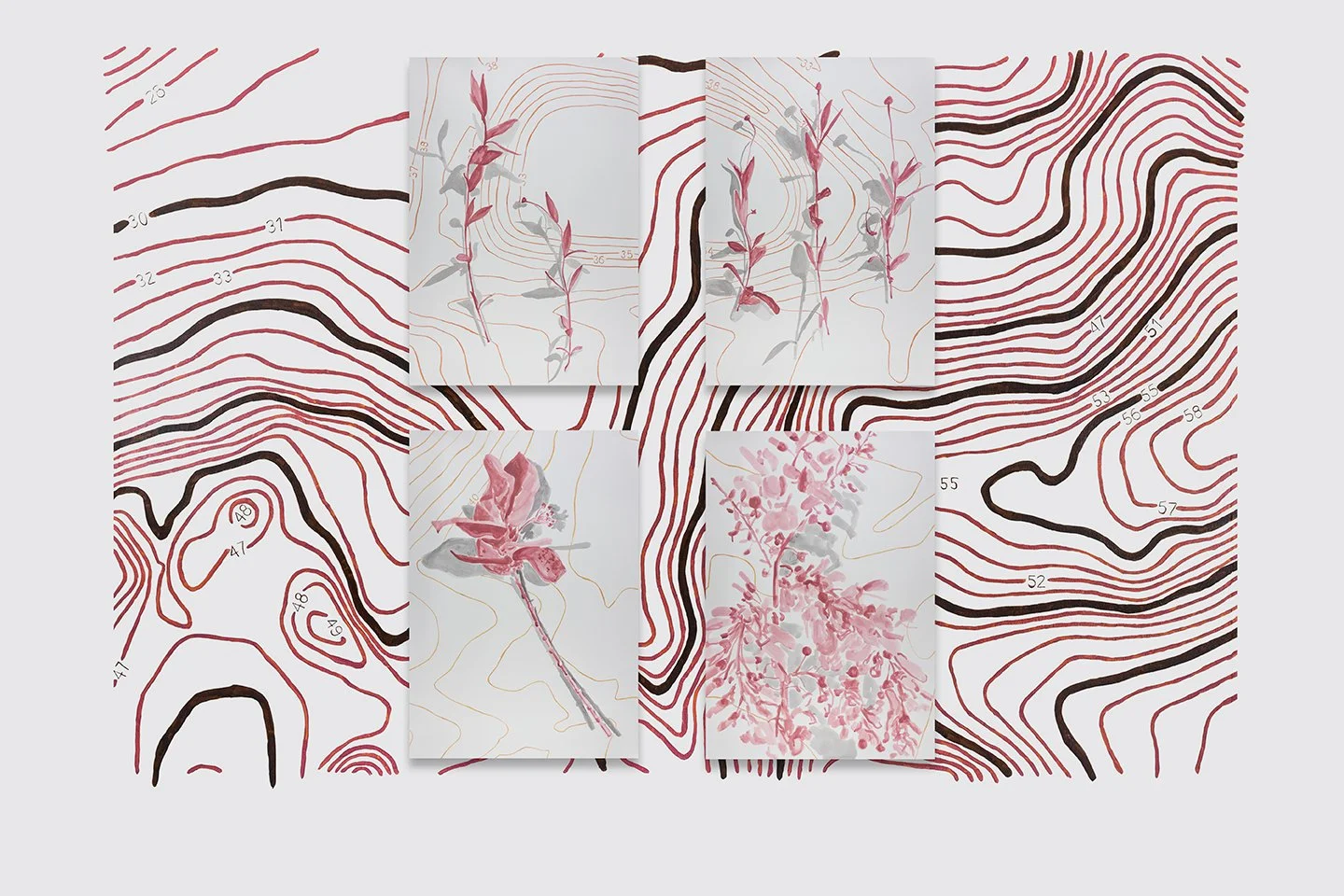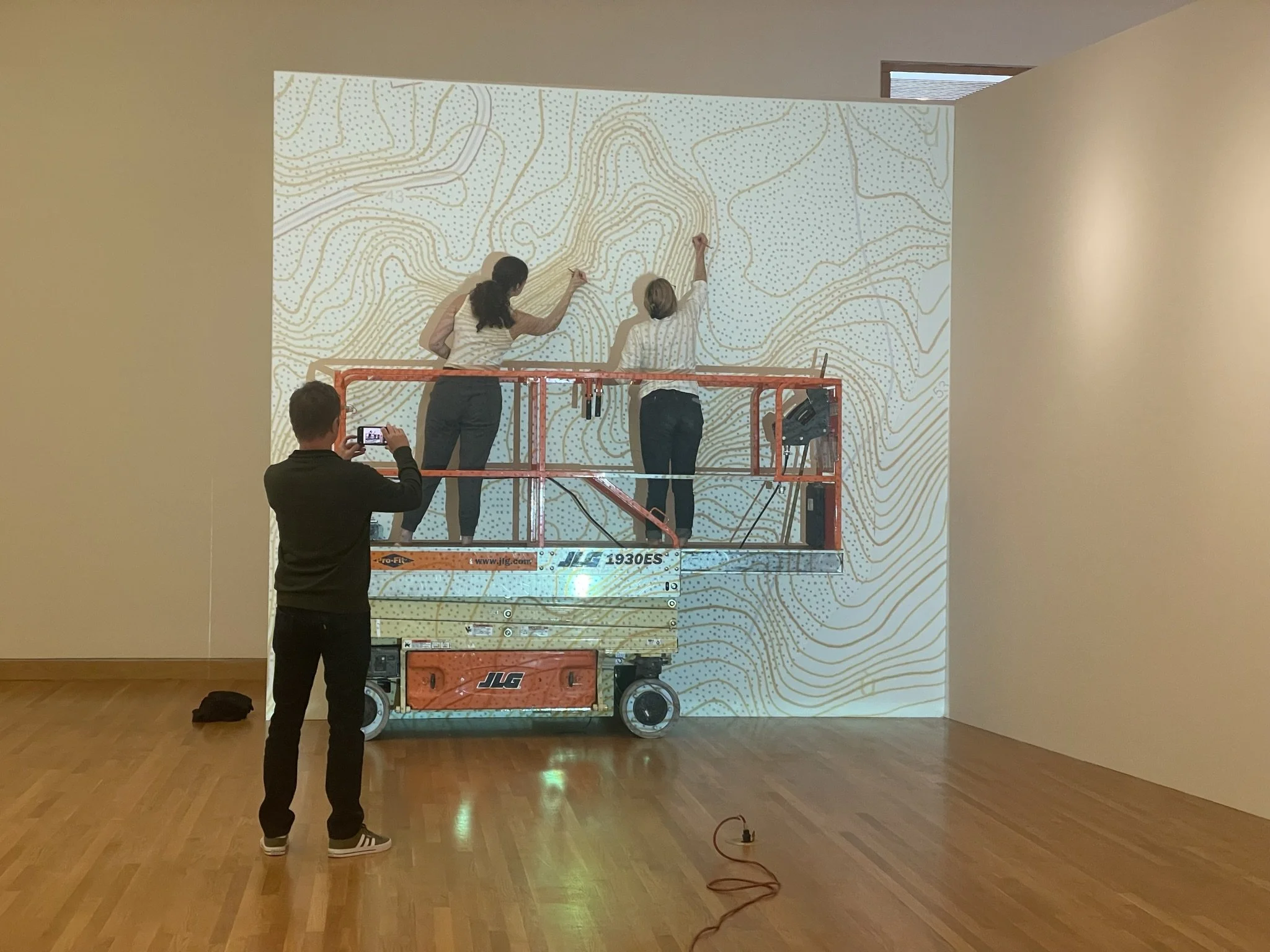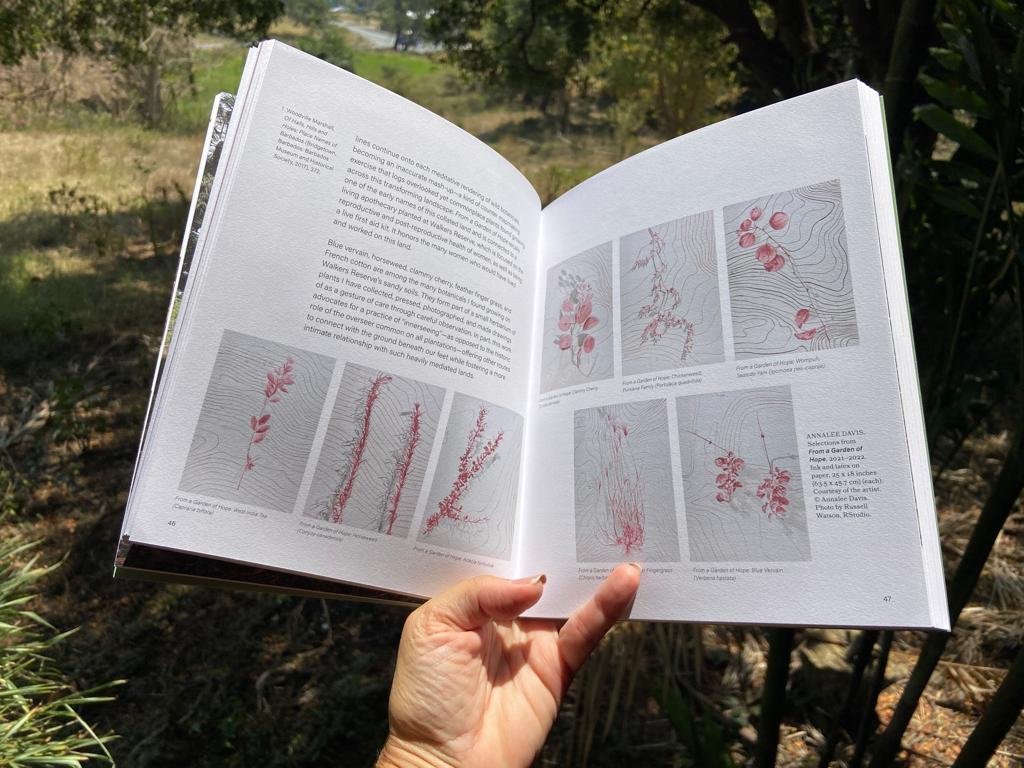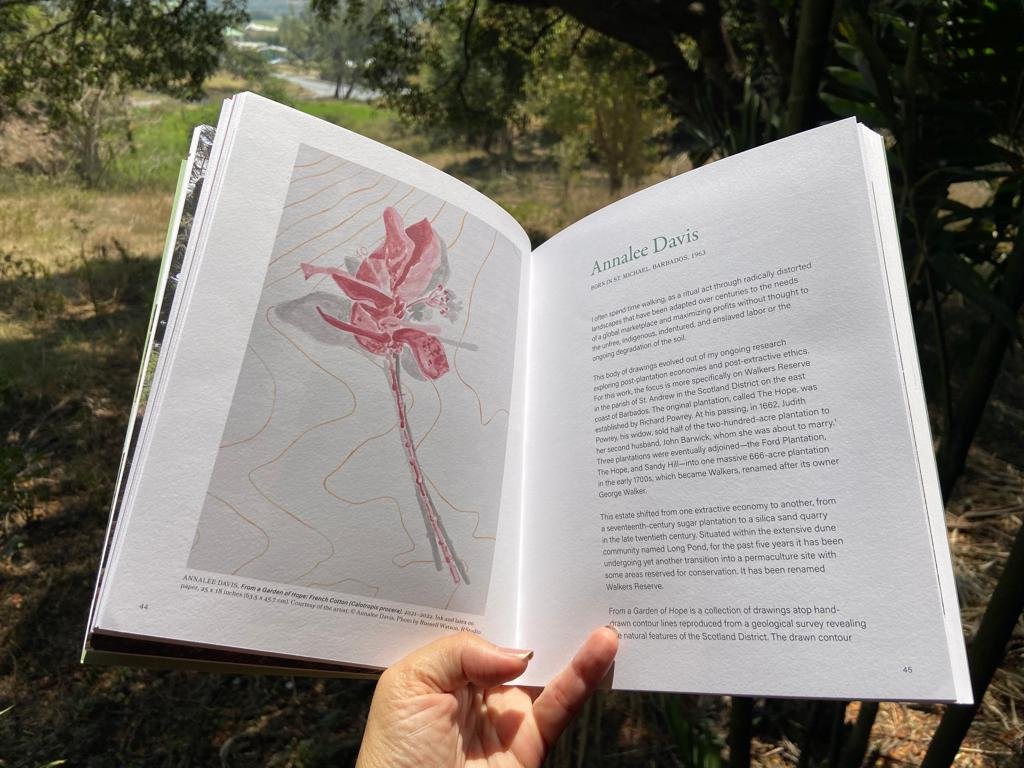Spirit in the Land: Nasher Museum of Art
Group exhibition
Nasher Museum of Art at Duke University, Durham, North Carolina, USA.
—
16 February 2023 -
09 July 2023
Organized by Trevor Schoonmaker, Mary D.B.T. and James H. Semans Director, Nasher Museum.
I’m thrilled that my work From a Garden of Hope (2021) has been included in this original and dynamic show at the Nasher Museum. Thanks to all who made Spirit of the Land come to life.
Image courtesy of Wendy Hower
“Spirit in the Land is a contemporary art exhibition that examines today’s urgent ecological concerns from a cultural perspective, demonstrating how intricately our identities and natural environments are intertwined. Through their artwork, thirty artists show us how rooted in the earth our most cherished cultural traditions are, how our relationship to land and water shapes us as individuals and communities. The works reflect the restorative potential of our connection to nature and exemplify how essential both biodiversity and cultural diversity are to our survival.
These artists explore the ways in which our inner spaces mirror our outer ones in works that both celebrate the profound beauty of our world and mourn its loss, and with it, vanishing histories of people and place.
As the battles against climate change are often most critical for marginalized communities— environmental justice is social and racial justice—the exhibition and catalogue center the voices of artists who approach ecological awareness through a close attention to the communities most negatively affected. Acting as environmental stewards, the artists reclaim and revitalize our understanding of nature as a repository of cultural memory, a place of sanctuary, a site of resistance, and a source of spiritual nourishment and healing. As land and water provide a sense of belonging and community, the exhibition illustrates our interdependence with all life on Earth.
Spirit in the Land has its roots in North America, with shoots reaching into the Caribbean. While these artists investigate natural environments under stress, the exhibition presents a belief in the possibility of transformation and regeneration. Our desire to live in harmony with nature is ultimately what will determine our future.”
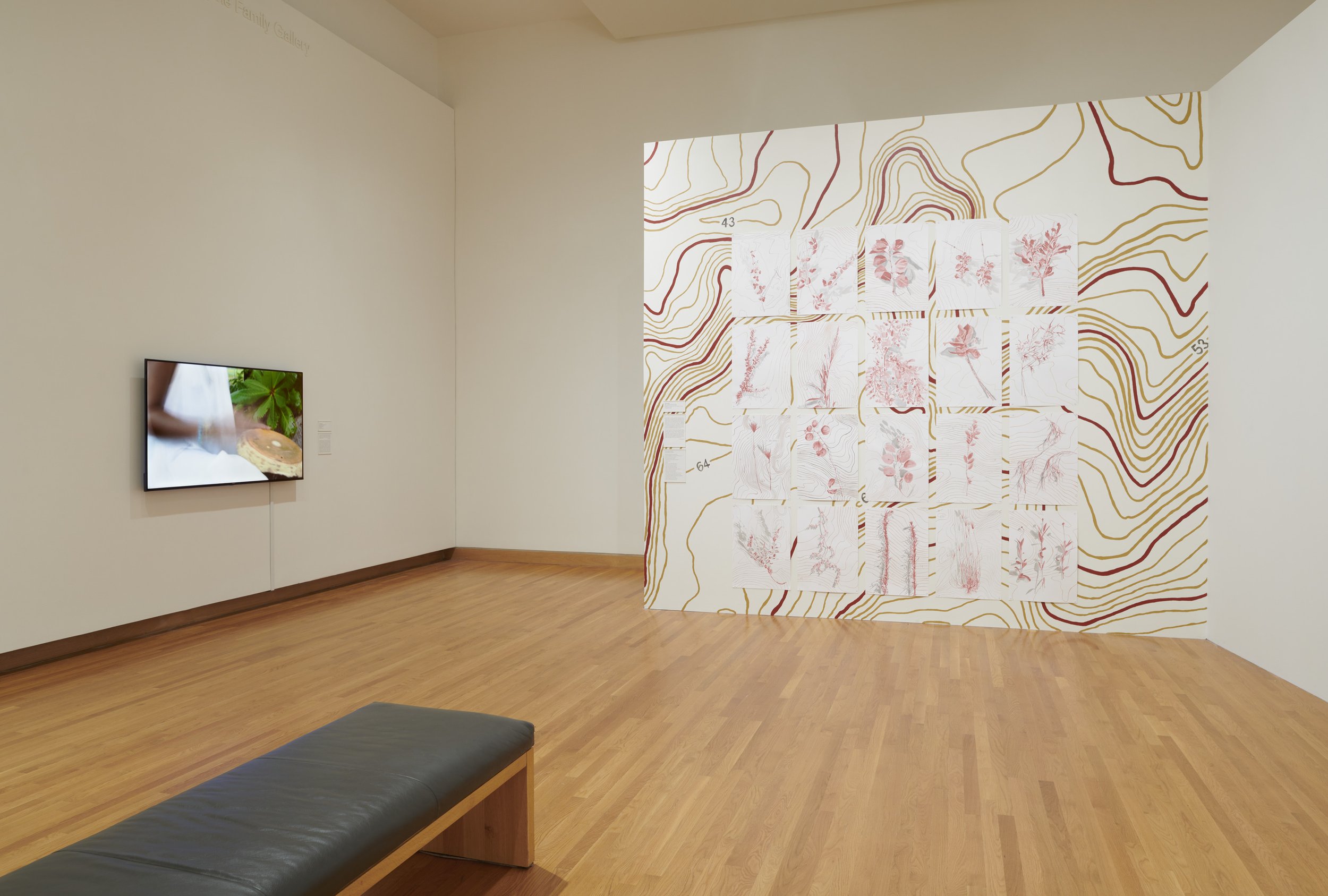
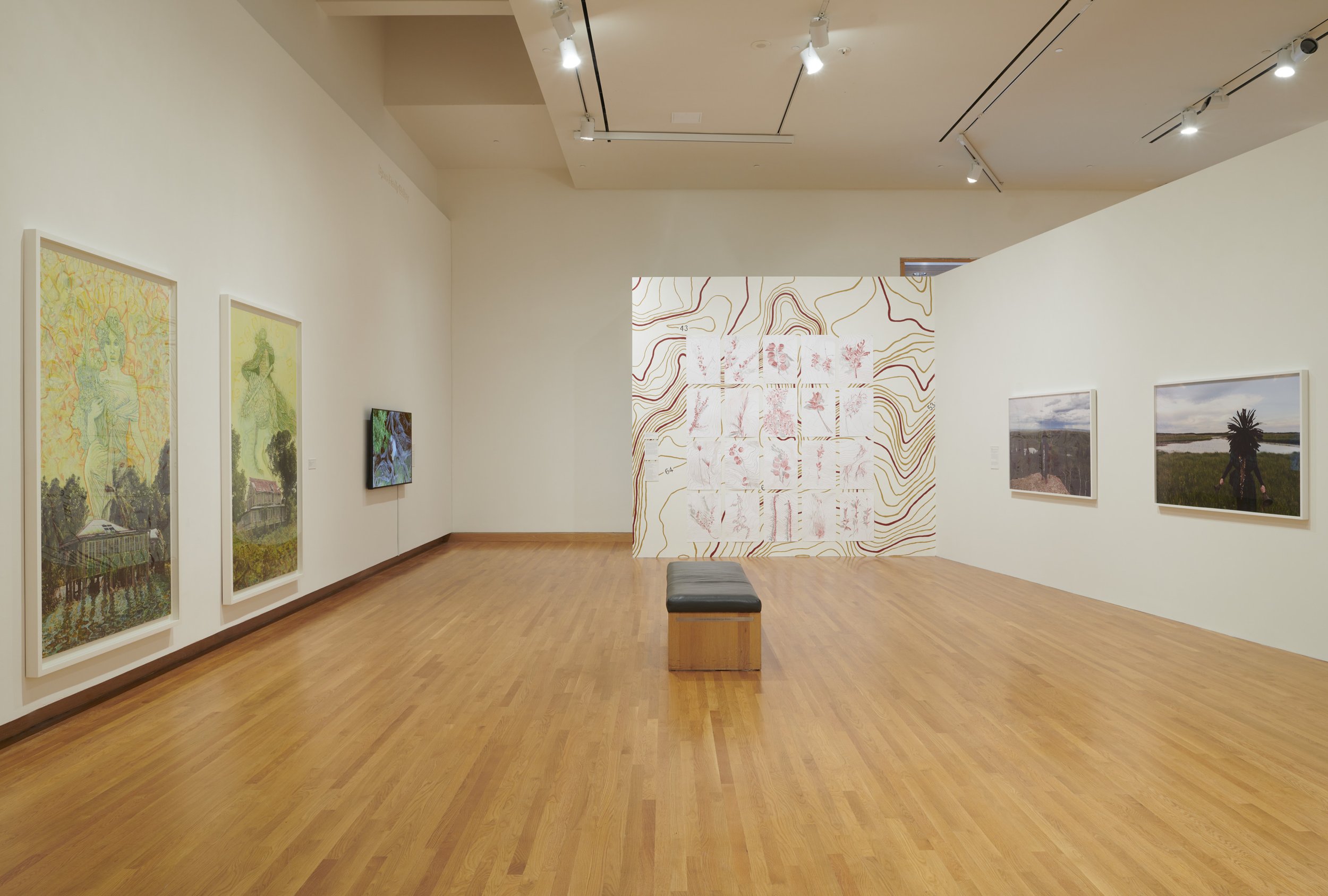
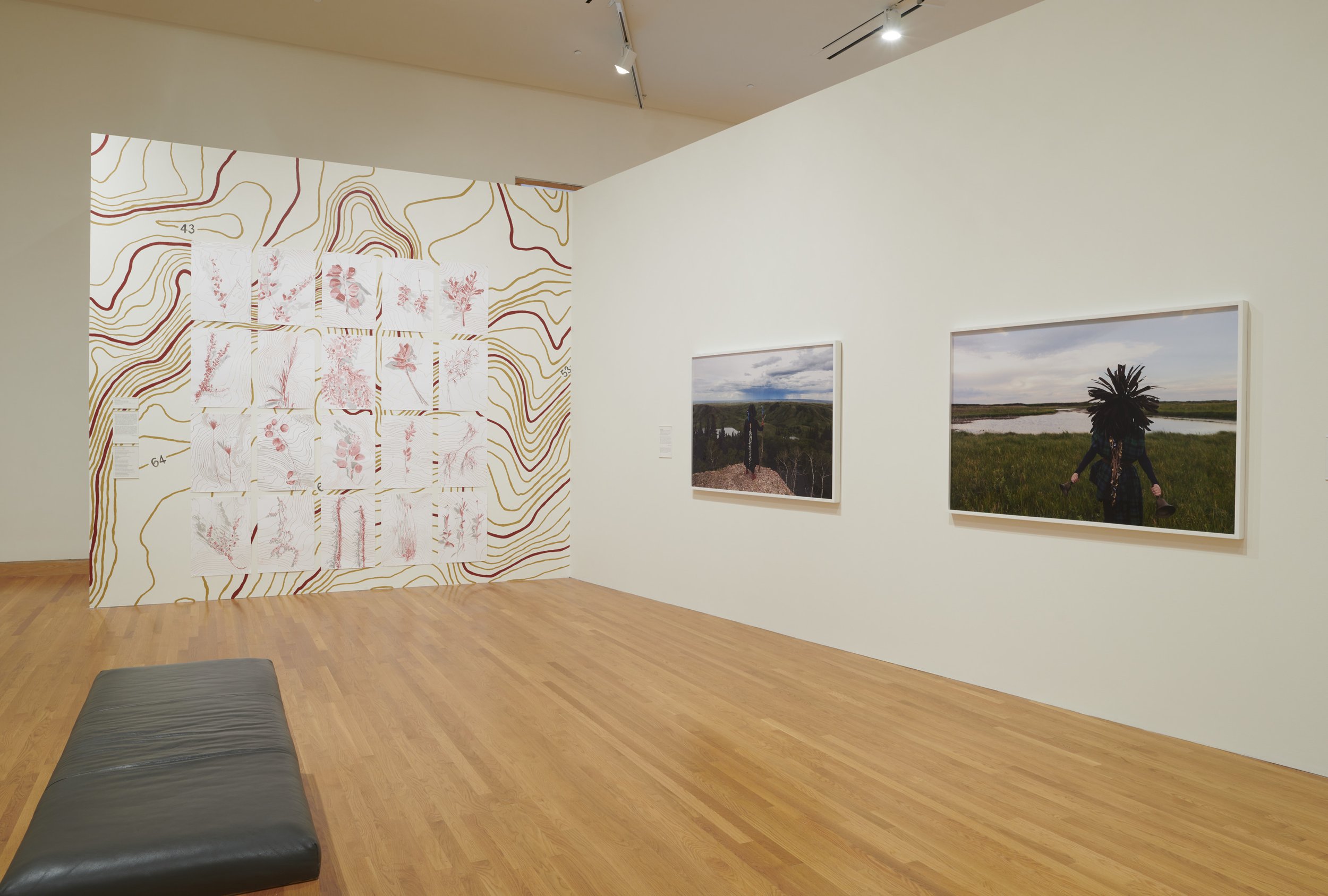
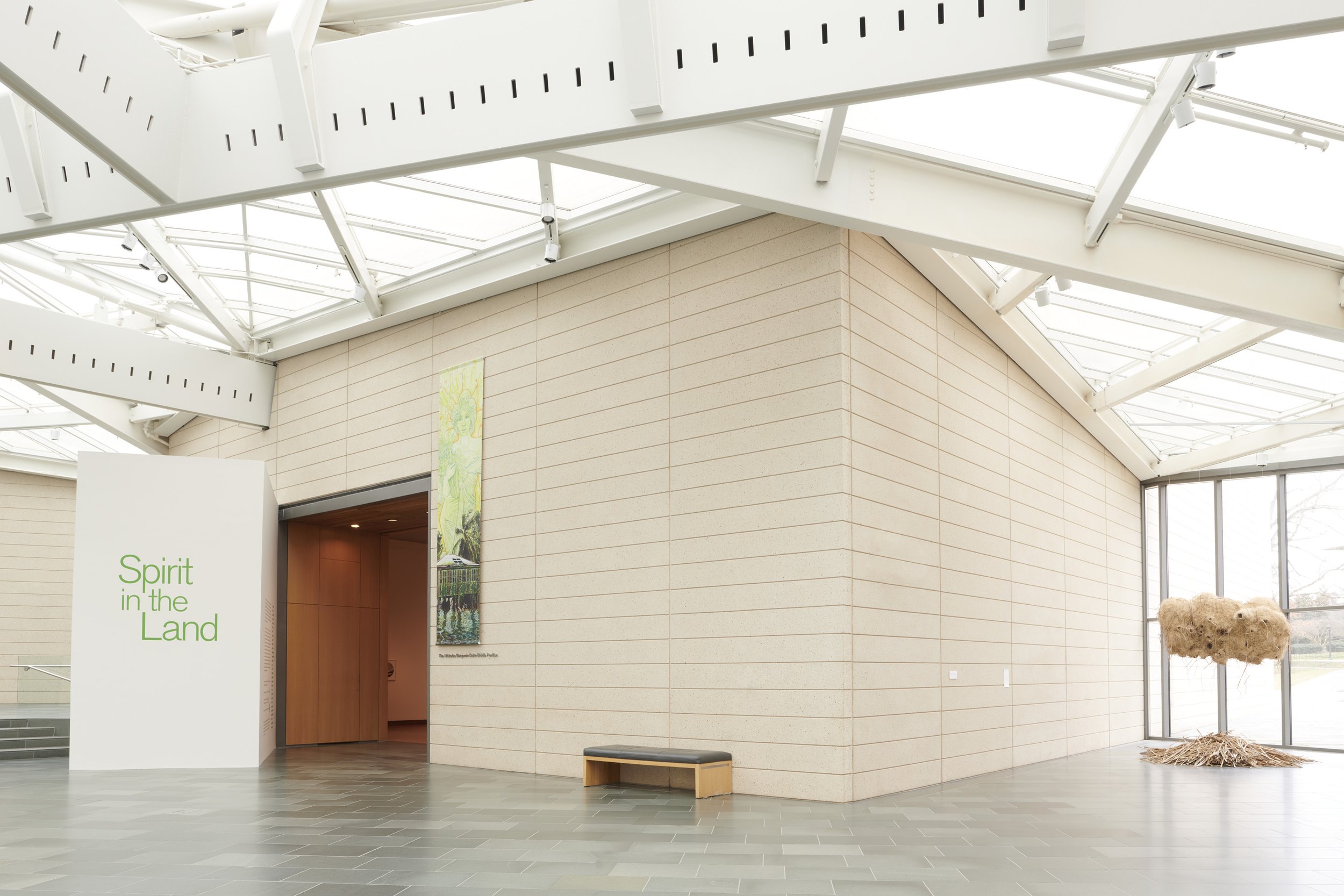
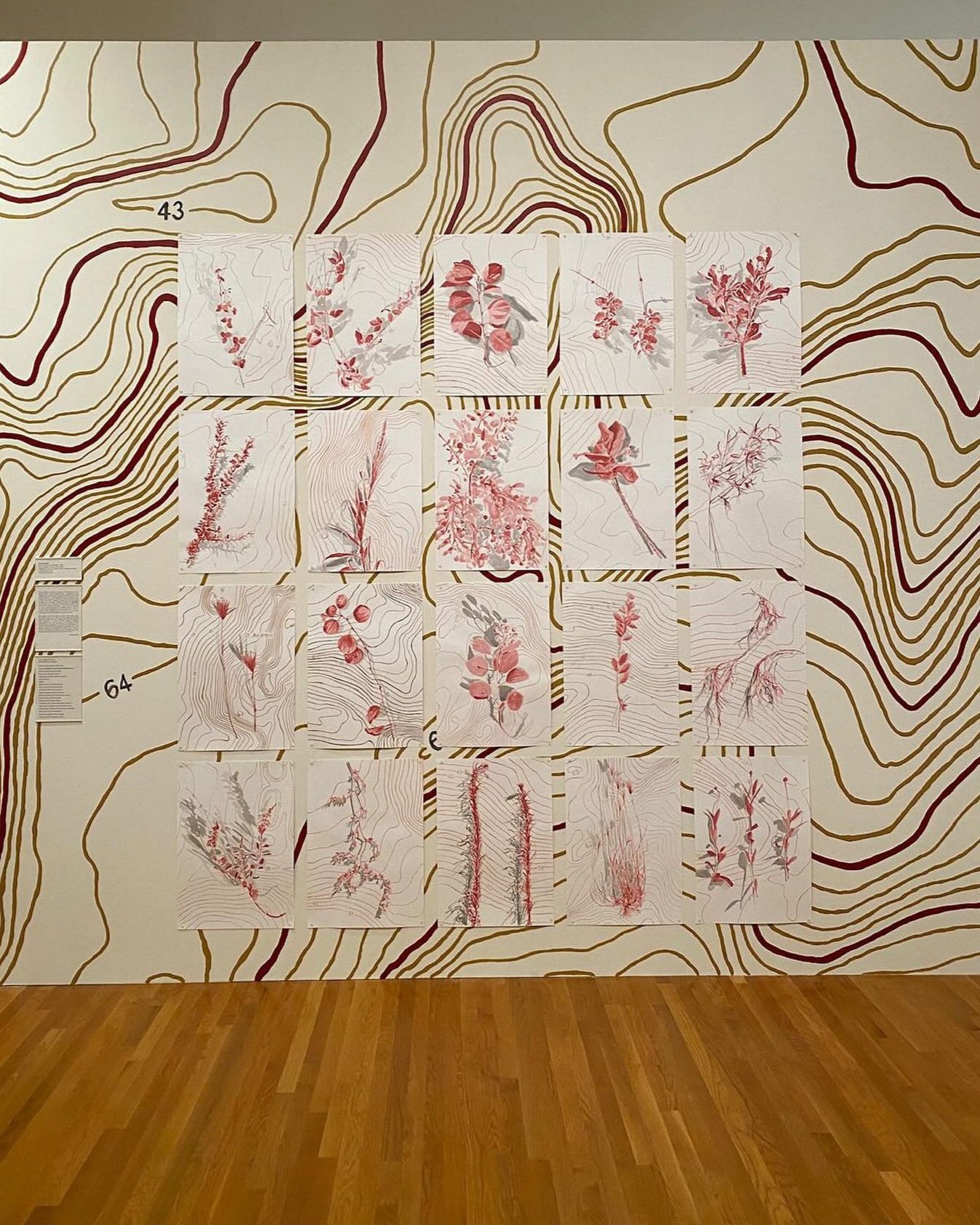
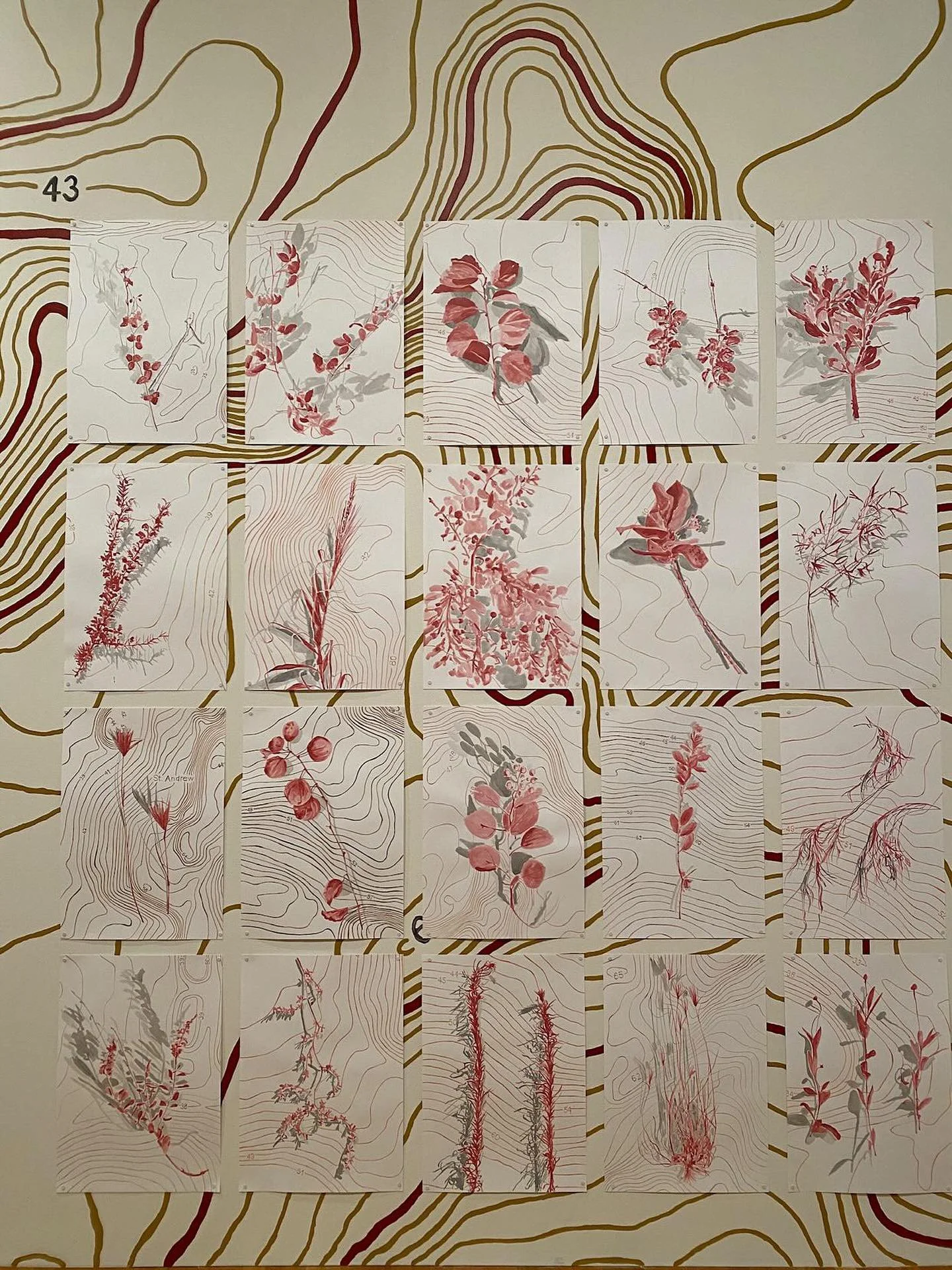
Installation view of Spirit in the Land, February 16 – July 09, 2023. Nasher Museum of Art at Duke University, Durham, North Carolina.
Photo by Brian Quinby.
Close up of 4 out of 16 drawings from the series From a Garden of Hope. Image courtesy of Russel Watson.
Installation process. Image courtesy of Wendy Hower.
Exhibition Catalogue: Text Excerpt
I often spend time walking, as a ritual act through radically distorted landscapes that have been adapted over centuries to the needs of a global marketplace and maximizing profits without thought to the unfree, indigenous, indentured, and enslaved labor or the ongoing degradation of the soil.
This body of drawings evolved out of my ongoing research exploring post-plantation economies and post-extractive ethics. For this work, the focus is more specifically on Walkers Reserve in the parish of St. Andrew in the Scotland District on the east coast of Barbados. The original plantation, called The Hope, was established by Richard Powrey. At his passing, in 1662, Judith Powrey, his widow, sold half of the two-hundred-acre plantation to her second husband, John Barwick, whom she was about to marry. [1] Three plantations were eventually adjoined—the Ford Plantation, The Hope, and Sandy Hill—into one massive 666- acre plantation in the early 1700s, which became Walkers, renamed after its owner George Walker.
This estate shifted from one extractive economy to another, from a seventeenth-century sugar plantation to a silica sand quarry in the late twentieth century. Situated within the extensive dune community named Long Pond, for the past five years it has been undergoing yet another transition into a permaculture site with some areas reserved for conservation. It has been renamed Walkers Reserve.
From a Garden of Hope is a collection of drawings atop hand-drawn contour lines reproduced from a geological survey revealing the natural features of the Scotland District. The drawn contour lines continue onto each meditative rendering of wild botanicals, becoming an inaccurate mash-up—a kind of counter mapmaking exercise that logs overlooked yet commonplace plants found growing across this transforming landscape. From a Garden of Hope recalls one of the early names of this collated land and is connected to a living apothecary planted at Walkers Reserve, which is focused on the reproductive and post-reproductive health of women, as well as being a live first aid kit. It honors the many women who would have lived and worked on this land.
Blue vervain, horseweed, clammy cherry, feather finger grass, and French cotton are among the many botanicals I found growing on Walkers Reserve’s sandy soils. They form part of a small herbarium of plants I have collected, pressed, photographed, and made drawings of as a gesture of care through careful observation. In part, this work advocates for a practice of “innerseeing”—as opposed to the historic role of the overseer common on all plantations— offering other routes to connect with the ground beneath our feet while fostering a more intimate relationship with such heavily mediated lands.
[1 ] See Woodville Marshall, Of Halls, Hills and Holes: Place Names of Barbados (Bridgetown, Barbados: Barbados Museum and Historical Society, 2017), 372.

